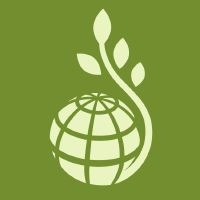Topic Menu
► Topic MenuTopic Editors

2. EPIUnit-Epidemiology Research Unit of Public Institute of Public Health, University of Porto, Porto, Portugal


2. Department of Sciences and Technology, Universidade Aberta (the Open University of Portugal), 4200-055 Porto, Portugal

Environmental and Health Impacts of Agro-Food Production and Consumption
Topic Information
Dear Colleagues,
The current challenges in the field of agro-food production and consumption are related to the greater capacity to use natural resources in a sustainable way, knowing the best technological processes, reducing waste, and increasing efficiency. Special emphasis has been placed on the promotion of sustainable forms of agriculture that require, alongside effective water and crop management, the optimal use and management of soil fertility and soil physical properties. On the other hand, the pollution and food contamination related to the use of production technologies and processes have significant environmental and social consequences. It is commonly known that sustainable processes involve the successful management of natural resources to satisfy human needs while maintaining or enhancing environmental quality and conserving natural resources for future generations. There are important issues in agro-food production and consumption (e.g., biotechnology, water use and water pollution, energy, storage conditions, chemicals, food safety, wastes) that have a significant impact on the environment and human health. Lifecycle thinking and assessment and their analytical power in assessing supply chains have been indicated as a reference methodology for assessing that impact. In this Topic, innovative and high-quality research articles are welcome, as well as review articles, addressing environmental and health impact assessment of agro-food production and consumption. Suitable approaches on individual single food products or in a food supply chain, using sustainable food processes and solutions, different assessment methodologies, and/or Lifecycle assessment analysis (e.g., agriculture/breeding, industrial, processing, logistics, packaging, use, and end of life, consumption strategy) are welcome.
Dr. Manuela Vieira da Silva
Prof. Dr. Edgar Pinto
Dr. Ana Pinto de Moura
Dr. Manuela Vaz Velho
Topic Editors
Keywords
- food chains
- food production, food consumption
- food waste
- environmental impact
- contaminants
- human exposure
- sustainability
- packaging
- environment assessment
- chemicals
- environmental health
- lifecycle
- circular economy
Participating Journals
| Journal Name | Impact Factor | CiteScore | Launched Year | First Decision (median) | APC |
|---|---|---|---|---|---|

Agriculture
|
3.3 | 4.9 | 2011 | 20.2 Days | CHF 2600 |

Environments
|
3.5 | 5.7 | 2014 | 25.7 Days | CHF 1800 |

Foods
|
4.7 | 7.4 | 2012 | 14.3 Days | CHF 2900 |

J
|
- | - | 2018 | 24.3 Days | CHF 1200 |

Sustainability
|
3.3 | 6.8 | 2009 | 20 Days | CHF 2400 |

MDPI Topics is cooperating with Preprints.org and has built a direct connection between MDPI journals and Preprints.org. Authors are encouraged to enjoy the benefits by posting a preprint at Preprints.org prior to publication:
- Immediately share your ideas ahead of publication and establish your research priority;
- Protect your idea from being stolen with this time-stamped preprint article;
- Enhance the exposure and impact of your research;
- Receive feedback from your peers in advance;
- Have it indexed in Web of Science (Preprint Citation Index), Google Scholar, Crossref, SHARE, PrePubMed, Scilit and Europe PMC.

